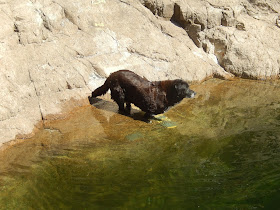 Sliammon elder Elsie Paul has written a memoir of her life growing up in Coastal BC during turbulent times for First Nations peoples. Written as I Remember It: Teachings from the Life of a Sliammon Elder has been a collaborative effort over many years so Elsie could tell her life story and, “impart her knowledge of Sliammon teachings and history.”
Sliammon elder Elsie Paul has written a memoir of her life growing up in Coastal BC during turbulent times for First Nations peoples. Written as I Remember It: Teachings from the Life of a Sliammon Elder has been a collaborative effort over many years so Elsie could tell her life story and, “impart her knowledge of Sliammon teachings and history.”The book began with assistance from Arlette Raaen, then the principal at the Malaspina University-College in Powell River, her husband Chris McNaugton, and Janet May. They recorded many of Elsie’s stories and developed a draft manuscript.
 |
| Sliammon today from the water side. |
I’ve called Powell River home since we purchased our float cabin in 2001. In all that time, the only time I went to the Sliammon Reserve north of town was for the welcoming of travelling canoes. Reading Elsie’s book has opened my eyes to the origin of my town, and the First Nations people that played a pivotal role.
 |
| Theodosia Inlet |
Elsie, known lovingly as Chi-Chia (grandmother in the Sliammon language), was protected from being taken away to the Sechelt Residential School many times by the grandparents who raised her. Experiencing just a few years away from home at a young age was traumatic. Living with her grandparents on the Sliammon reserve and in remote camps, Elsie learned the traditional language and ways. Because of the disruption to normal life caused by residential schools, much has been lost, including speakers of the Sliammon language. Now as a Sliammon elder, she is preserving what she knows and remembers.
 |
| Up the Coast |
Written as I Remember It tells about Elsie’s ancestors, where they came from, how they lived, and how that merged into modern living. Prejudice had to be overcome, but Elsie constantly strove in a positive manner to make a better life for her family and fellow members of the Sliammon Nation.
This is not an easy book to review. It brings sadness for past and present indignities, but also hope for the future for the Sliammon Nation as it moves towards treaty completion and autonomous self-governance. Thank you Elsie for this heartfelt gift to everyone. -- Margy




















